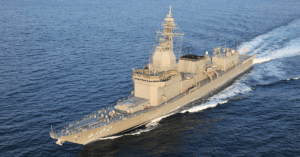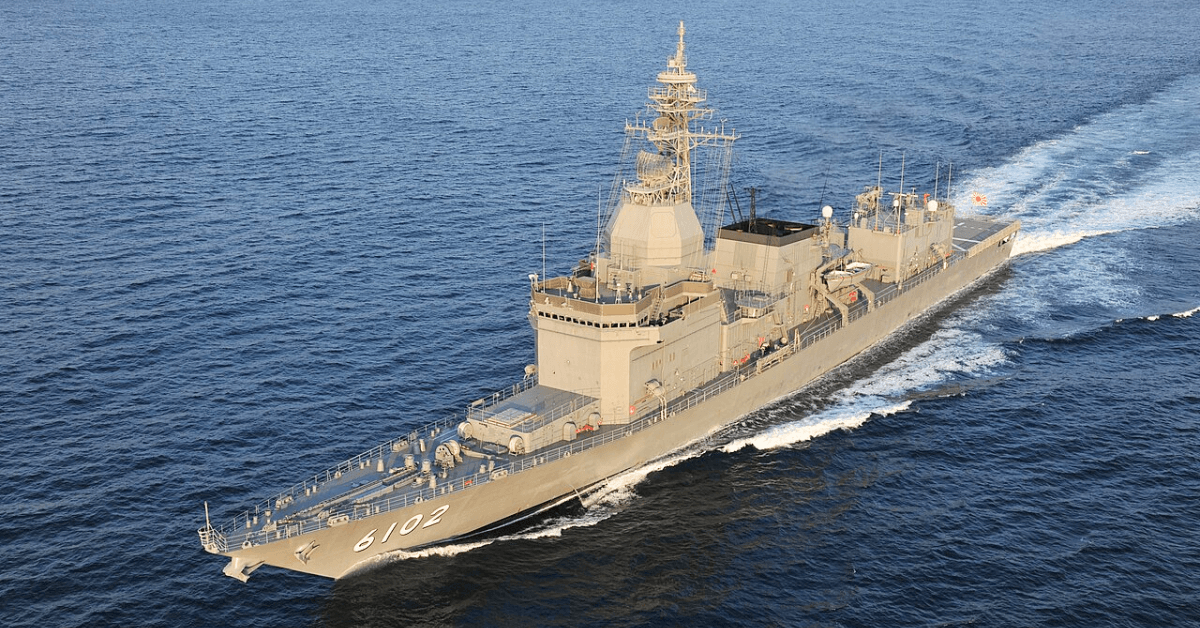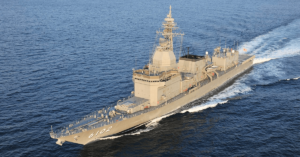
US Accuses Chinese Satellite Firm Of Helping Houthis Strike Ships In Red Sea
April 19, 2025
Study Reveals Over Half Of Scotland’s Coastal Vessels Go Untracked
April 19, 2025

Japan’s Ministry of Defense has officially revealed the installation of a prototype electromagnetic railgun on its naval test platform, JS Asuka (ASE-6102).
The Japan Maritime Self-Defense Force (JMSDF) released images on April 9, 2025, during a visit by Vice Admiral Omachi Katsushi, Commander of the Self-Defense Fleet.
The turret-mounted railgun is now fixed to the rear flight deck of the 6,200-ton JS Asuka, a vessel long used for testing advanced maritime technologies.
Developed by the Acquisition, Technology & Logistics Agency (ATLA), Japan’s railgun program began full-scale development in 2016 under the project “Research on Electromagnetic Acceleration Systems.”
昨日の長浦 pic.twitter.com/9hfTpd2aZh
— ひびき (@hibikiw) April 5, 2025
In 2023, Japan conducted the world’s first shipboard firing test of a railgun, and the installation on JS Asuka is a shift from prototype evaluation to practical weapon system integration.
ATLA’s railgun has demonstrated muzzle velocities exceeding Mach 6.5 (2,230 m/s), with earlier tests achieving up to 120 stable firings at 2,000 m/s.
Researchers addressed barrel erosion issues by replacing copper rails with more durable materials, enabling longer operational life.
The current phase, running through FY2026, aims to develop a complete gun system including continuous firing capability, a dedicated fire control system, and enhanced projectile stability.
今日は軍港めぐりで
海上自衛隊試験艦「あすか ASE-6102」のレールガンと思われるものが見えました
砲台と砲身が角張った形状です
pic.twitter.com/OuRHhqU4I1
— モリジュン (@HNlEHupY4Nr6hRM) April 9, 2025
This advancement could allow the railgun to intercept hypersonic missiles and strike naval or ground targets over long distances with low-cost, high-speed kinetic rounds.
Japan envisions integrating railguns into future 13DDX destroyers and truck-mounted land systems for both coastal and artillery roles.
The system’s potential to offer deep magazines and rapid response firepower could revolutionise defense against fast, high-volume threats.
The US Navy previously postponed its railgun program due to technical hurdles, but Japan appears to be making steady progress in adapting the technology for operational deployment.
References: Naval news, TWZ
Source: Maritime Shipping News



